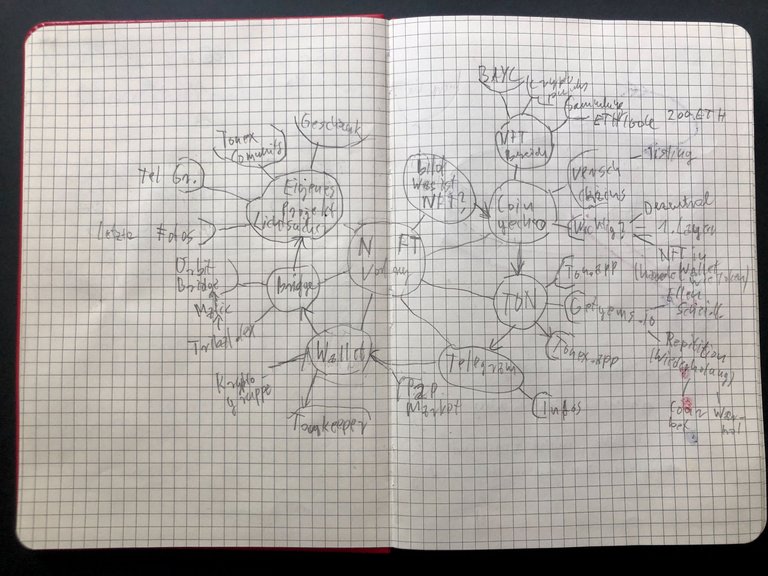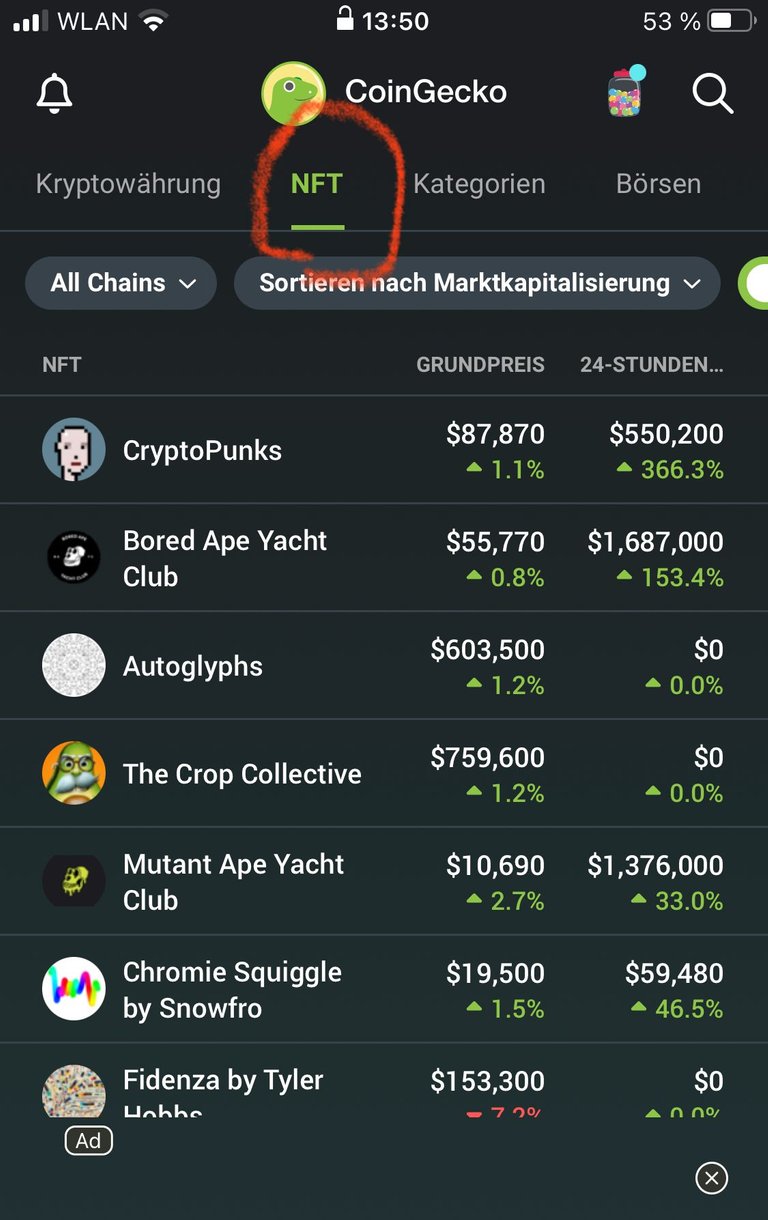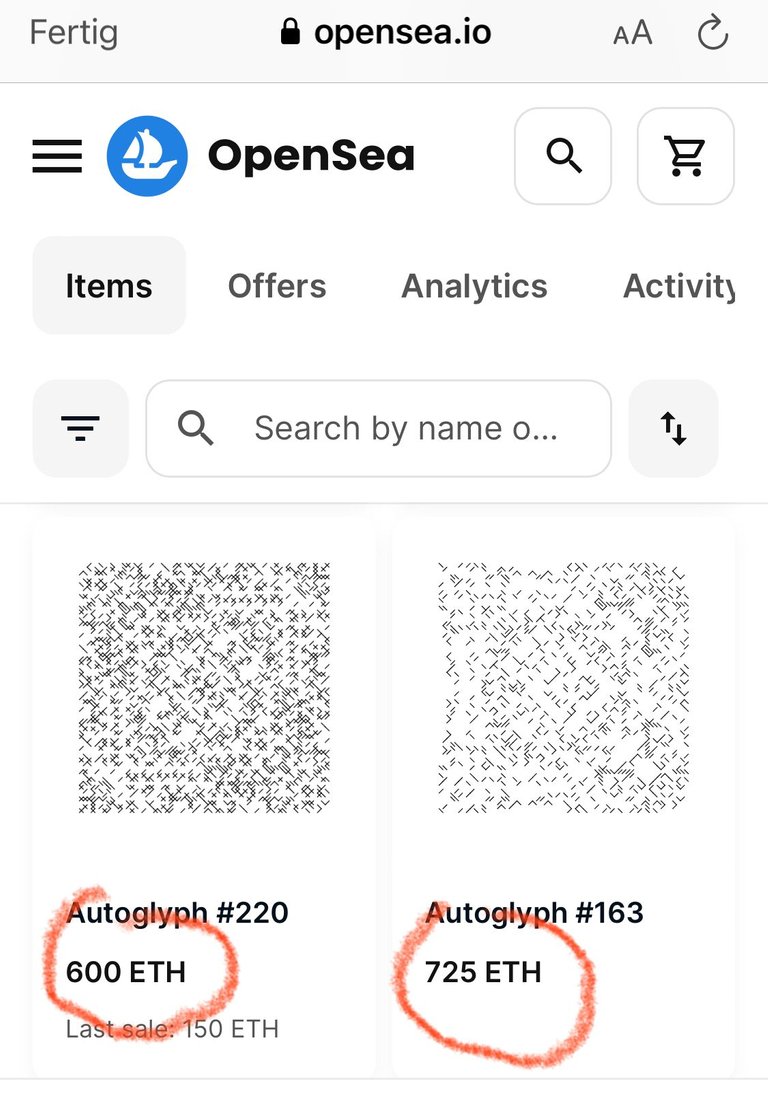Now I promised in the last HC23 post to summarise my talk on NFT here for all who were there, but especially for those who could not be there.

As the lecture was quite extensive and will possibly be supplemented by one or the other here, I will take at least 3 parts and then make a collection out of it.
In the first part I will talk about NFT in general, in the second part I will introduce a chain that I think is particularly suitable for NFT (and no, unfortunately it is not Hive, but I will explain in detail why) and in the third part I will talk about my own current light art project "the light seekers", which I plan to tokenise.
We start with this graphic here, what does an NFT actually do?!

As an initial product, take a #banana for a purchase price of say $1.50. What is the most profitable way to sell it? At the top we see the designations of individual occupational groups and then see in a simplified graph how and how much profit the individual would maximally earn from the one banana.
At the very end we see the NFT artist who makes a golden frame around the banana and sells it as an NFT work of art for a fabulous 10,000$. So he makes by far the biggest profit out of all possible professions.
Yet they say art is a breadless art and the artist would only become famous and supposedly rich when he is in the ground. Well, #AndyWarhol, for example, has proven exactly the opposite: As a millionaire many times over, he unfortunately passed away far too early.
Impossible? Magic? We'll see if and how it's possible.
Coingecko now has its own NFT section
Did you know? The ever-popular coin tracker (the best of them all, which is why PeakD includes it in its backend to track the hive price) is now dedicated to NFTs.

#Coingecko lists a total of 9 Chains so far. I'm sure there will be more, but Hive is unfortunately not included. Why? I'll have some thoughts on that later, but I don't think it's because the price for listing is too high.
In 3rd place we see the Autoglyphs collection. These are relatively plain square abstract graphics that were created from characters when someone messed with the ETH code.
It looks something like this:

So at first glance nothing special, yet the two autoglyphs shown cost a whopping 600 and 750 ETH respectively! Everyone can work out how much that is in € or $ and people are not only willing to pay that, they are even pushing to be the first to be allowed to buy such an NFT, as the statistics show.
How is such a thing possible?
Remember the banana above! The one in the gold frame. I can't claim to know all the details down to the last detail that led to these prices and experienced NFTers and Hivians like e.g. @solymi can say a lot more about it, but I think I have identified 3 main points in the pattern:
- Each glyph is unique and their number is limited to 512 in quantity.
- They cannot be repeated because the generator has set itself forever. So they are exclusive and deflationary.
- They are mined on a 1st layer chain (ETH) and decentralised. And when you acquire such an NFT, you have it like a token directly in your wallet and can show it to everyone and trade with it as well.
You can find more details on this website here.
Of course, this is only one of the countless examples. I could name more, but they would show a similar, if not the same pattern.
Outlook
So much for the first part. I hope I have given a reasonably good introduction.
In the second part I will explain which technical conditions have to be met for an NFT to really be one and which chain fulfils this best in my opinion.
Then I will present an NFT marketplace that deserves this name, show details on how you can best analyse the NFTs and present a social network that is directly geared towards NFTs and already has the necessary exclusivity.
So stay tuned! See you soon.